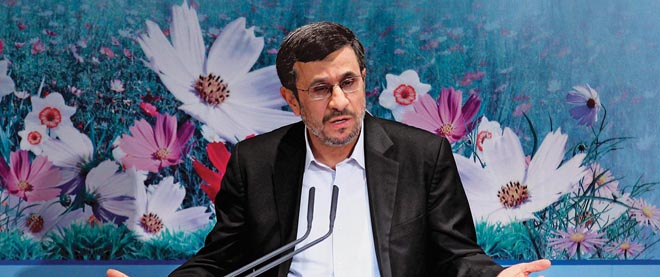The promise of a better future
A look inside our third annual Rethink Issue
© Alessia Pierdomenico / Reuters
Share

How long does “now” last? Research ranging from brain science to music to cultural ethnography suggests a moment in time lasts about three seconds. That’s how long it takes to shake hands. It’s also how long you can remember a phone number without committing it to memory. So if the present lasts just three seconds, any time longer than that must be the future.
It’s with the near future in mind that Maclean’s presents our third annual Rethink Issue. Our first issue in 2010 turned the magazine on its side, and unveiled a broad tableaux of forward thinking, including an interview with Microsoft co-founder Bill Gates on the future of education, and a major story contemplating manned exploration of Mars. In 2011 our Rethink Issue was enlivened by stories featuring augmented-reality technology—illustrations that came to life when viewed by computers or smartphones.
This time around, we’re focusing on an immediate and practical look at the future: the ways in which technology is changing how we live—everything from the way we get to work, to how we look in the mirror, to how to get the last bit of ketchup out of the bottle. And in honour of the Rethink Issue’s third anniversary, we’ve given this edition three different covers.
Robots and flying cars have long been considered integral to life in the future. So where are they? Aside from robotic vacuum cleaners and Christmas toys, robots don’t seem to have much presence in everyday life. But as national correspondent Charlie Gillis explains in “The robot invasion,” robots are already taking over warehouses and will soon invade construction sites and other workplaces to take over a variety of dirty, dangerous or difficult jobs. At home, many mundane jobs, such as cutting the grass or painting the house, could become the domain of robotic help. Flying cars are also set to move from speculation to reality with one functional model going into production next year. (“Back to the future”)
The near-future of politics will be defined by the increasing sophistication of voter micro-targeting. These techniques mean politicians will soon arrive at your doorstep with a precise notion of your interests and intentions based, in part, on how you’ve communicated with political parties in the past (“Elect Big Brother”).
Finally, humans may soon be able to augment themselves via high-performance genes or other revolutionary techniques that will improve performance, remove scars, heal the body or simply emit personal designer scents (“Tomorrow’s people”).
The future promises to be practical and useful. And it’s a lot closer than you might think.
This magazine has long been a supporter of stern sanctions against Iran. Now comes evidence these policies are starting to have a real and dramatic effect on life inside Iran.
Since late last year, Canada and most other Western nations have imposed a series of harsh economic measures aimed at isolating the rogue nation and bringing its nuclear program to a halt. While Iran remains the single biggest threat to peace in the Middle East, these moves have often proven controversial within Canada.
In September, for example, Foreign Affairs Minister John Baird closed Canada’s embassy in Iran and expelled the Iranian embassy from Ottawa. This move was widely termed a “mistake” by the diplomatic community. TD-Canada Trust was also subject to heated criticism this past summer for strictly interpreting new banking restrictions on individuals with substantial dealings in Iran.
It appears these multi-pronged, multi-national efforts are finally bearing fruit. A European oil embargo has pushed Iran’s oil revenues down an estimated 60 per cent compared to last year. Israel’s Finance Minister Yuval Steinitz puts the loss in revenues at US$45 billion to $50 billion. Shutting Iran out of international foreign exchange markets has also caused a significant decline in the national currency, the rial, which fell 25 per cent over two days in early October. This in turn has stoked inflation. Steve Hanke, an economist at Johns Hopkins University and senior fellow at the Cato Institute in Washington, estimates Iranian inflation is now almost 200 per cent a year—well into the devastating range of hyperinflation. Reports from inside the country suggest staples such as rice have more than doubled in price over the past three months.
Iran has been working hard to sell oil outside the embargo to countries such as China and India, but it seems clear sanctions and diplomatic isolation are having a major impact on economic stability within the country. Last week saw a crackdown on currency traders, street protests and a volte face on domestic subsidies from the Iranian parliament. The sanctions are making life inside Iran increasingly less comfortable, particular for the well-educated middle class. And widespread internal dissent holds the greatest promise for real, necessary change in Iran. (For more on Iran click here.)